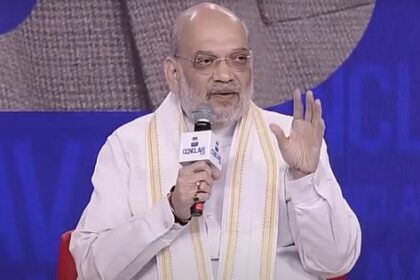The film explores themes of ambition and sibling rivalry but lacks originality and depth.
Anurag Kashyap’s film, Nishaanchi, also known as Shooter, features Aaishvary Thackeray, Monika Panwar, Kumud Mishra, and Vedika Pinto. The narrative unfolds in Kanpur in 2006, where identical twins Babloo and Dabloo, played by Thackeray, embark on a botched bank robbery alongside Babloo’s girlfriend, Rinku. The ill-fated heist leads to Babloo’s imprisonment, leaving Rinku vulnerable and Dabloo forced to step out from his brother’s shadow.
Nishaanchi is presented as the first installment of a two-part drama, exploring the contrasting temperaments of the brothers and their shared affection for the same woman. While the film is crafted with skill and features solid performances, it ultimately adheres to conventional storytelling, weaving a predictable tale of ambition and mild sibling rivalry. Kashyap’s approach reflects a near-academic examination of classic Bollywood tropes, incorporating familiar elements such as quarrelsome twins, a struggling widow, and a villain intent on seizing what does not belong to him.
The plot is driven by Ambika Prasad, portrayed by Kumud Mishra, who manipulates relationships, creating tension between the wrestler Jabardast, played by Viineet Kumar Siingh, and his mentor. Meanwhile, Jabardast’s wife, Manjari, portrayed by Monika Panwar, faces the challenges of raising her twin sons alone. Babloo emerges as a confident figure, in stark contrast to Dabloo, who is more reserved and conventional. As Ambika threatens Rinku’s safety, Babloo transitions from being Ambika’s enforcer to Rinku’s devoted lover, while Dabloo waits for his moment in the limelight.
At times, Nishaanchi alludes to influences from classic films like Mother India and Scarface, as well as Kashyap’s own Gangs of Wasseypur. However, unlike Gangs of Wasseypur, which featured eccentric characters and a unique sensibility, Nishaanchi falls short, appearing as a diluted version of that epic narrative. The film’s lengthy runtime of 176 minutes is marked by an abundance of exposition, and the most compelling aspects of the twins’ contrasting lives remain underexplored.
Despite its shortcomings, the film includes moments of humor and self-referential commentary on the impact of popular Hindi cinema. Kashyap’s ability to draw out strong performances from his cast is evident, with Monika Panwar and Kumud Mishra standing out. Thackeray, in his debut role, surprises viewers with more depth than mere novelty. Panwar’s portrayal of Manjari adds depth to her character, presenting her as a fierce matriarch. Mishra effectively brings to life the layered complexities of Ambika Prasad, contributing to the film’s dynamic.
While Nishaanchi strives to offer a fresh take on the theme of doubling—a recurring motif in cinema—it ultimately relies on contrivance. The film’s lack of dramatic flair and grandiosity in the twins’ struggles makes them feel like ordinary individuals on a familiar journey rather than extraordinary characters in an epic saga. As a result, Nishaanchi, despite its potential, misses the opportunity to leave a lasting impression.








